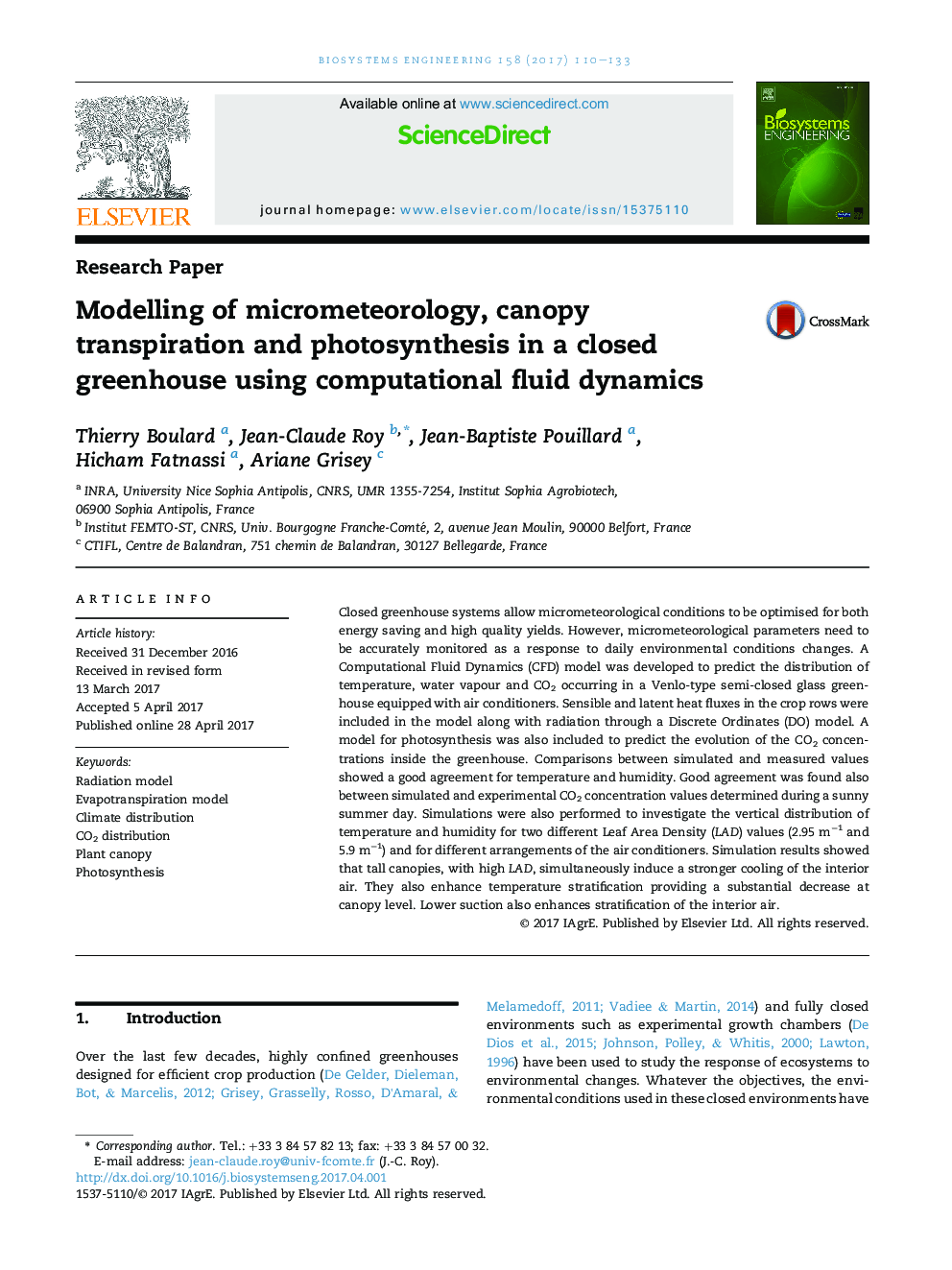| Article ID | Journal | Published Year | Pages | File Type |
|---|---|---|---|---|
| 5471918 | Biosystems Engineering | 2017 | 24 Pages |
â¢The climate parameters in a semi closed greenhouse are simulated and measured.â¢The 3D (CFD) model combines radiation, transpiration and photosynthesis.â¢Simulations are compared with measurements to validate the model.â¢The influence of the air conditioning system arrangement on the humidity distribution is evidenced.â¢CFD simulations studies allow to optimise the system's design.
Closed greenhouse systems allow micrometeorological conditions to be optimised for both energy saving and high quality yields. However, micrometeorological parameters need to be accurately monitored as a response to daily environmental conditions changes. A Computational Fluid Dynamics (CFD) model was developed to predict the distribution of temperature, water vapour and CO2 occurring in a Venlo-type semi-closed glass greenhouse equipped with air conditioners. Sensible and latent heat fluxes in the crop rows were included in the model along with radiation through a Discrete Ordinates (DO) model. A model for photosynthesis was also included to predict the evolution of the CO2 concentrations inside the greenhouse. Comparisons between simulated and measured values showed a good agreement for temperature and humidity. Good agreement was found also between simulated and experimental CO2 concentration values determined during a sunny summer day. Simulations were also performed to investigate the vertical distribution of temperature and humidity for two different Leaf Area Density (LAD) values (2.95Â mâ1 and 5.9Â mâ1) and for different arrangements of the air conditioners. Simulation results showed that tall canopies, with high LAD, simultaneously induce a stronger cooling of the interior air. They also enhance temperature stratification providing a substantial decrease at canopy level. Lower suction also enhances stratification of the interior air.
